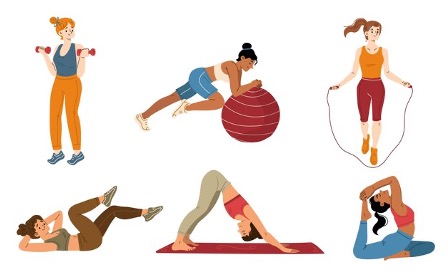
Migraines can be incredibly disruptive, affecting your ability to work, socialise, and enjoy daily activities.
While medication is often necessary, incorporating regular exercise into your routine can significantly help in managing and reducing migraine symptoms.
At the Sydney Headaches and Migraine Clinic, we believe in a holistic approach to migraine management. In this blog post, we will explore how specific exercises can help alleviate migraines.
How Exercise Helps with Migraines
Stress Reduction
Exercise is known to reduce stress, a common trigger for migraines. Physical activity stimulates the release of endorphins, the body’s natural painkillers, which can help reduce the perception of pain and improve mood.
Improved Blood Flow
Regular exercise enhances circulation, ensuring that your brain and muscles receive an adequate supply of oxygen and nutrients. Improved blood flow can help prevent the vascular changes that trigger migraines.
Muscle Tension Relief
Certain exercises can help relieve muscle tension, particularly in the neck and shoulders, which is often associated with migraines. Stretching and strengthening exercises can prevent muscle stiffness and reduce the frequency of tension headaches and migraines.
Types of Exercises Beneficial for Migraines
Aerobic Exercise
Aerobic exercises, such as walking, jogging, swimming, or cycling, are excellent for improving cardiovascular health and reducing migraine frequency. Aim for at least 30 minutes of moderate aerobic activity most days of the week.
Yoga and Stretching
Yoga combines physical postures, breathing exercises, and meditation, making it an effective way to reduce stress and muscle tension. Poses such as the child’s pose, cat-cow stretch, and savasana are particularly beneficial for migraine sufferers.
Strength Training
Strength training exercises can help improve posture and reduce muscle tension. Focus on exercises that strengthen the core, back, and neck muscles. Use light weights or resistance bands to perform exercises like rows, shoulder presses, and planks.
Exercise Tips for Migraine Sufferers
Start Slow
If you’re new to exercise or experiencing a migraine, start with low-intensity activities and gradually increase the intensity and duration. Listen to your body and avoid overexertion, which can trigger migraines.
Stay Hydrated
Dehydration can be a migraine trigger, so it’s crucial to stay hydrated before, during, and after exercise. Drink plenty of water and consider electrolyte-rich beverages if you engage in prolonged or intense activities.
Create a Routine
Consistency is key to reaping the benefits of exercise for migraine management. Establish a regular exercise routine that fits your schedule and stick to it. Even short, daily activities can make a significant difference.
Conclusion
Incorporating regular exercise into your lifestyle can be a powerful tool in managing and reducing migraine symptoms.
From aerobic exercises to yoga and strength training, there are various activities that can help alleviate pain and improve overall well-being.
At the Sydney Headaches and Migraine Clinic, we encourage a holistic approach to migraine management, including personalised exercise recommendations.
If you are struggling with migraines, contact us today to learn how we can help you create an effective exercise plan tailored to your needs.
Written by:









